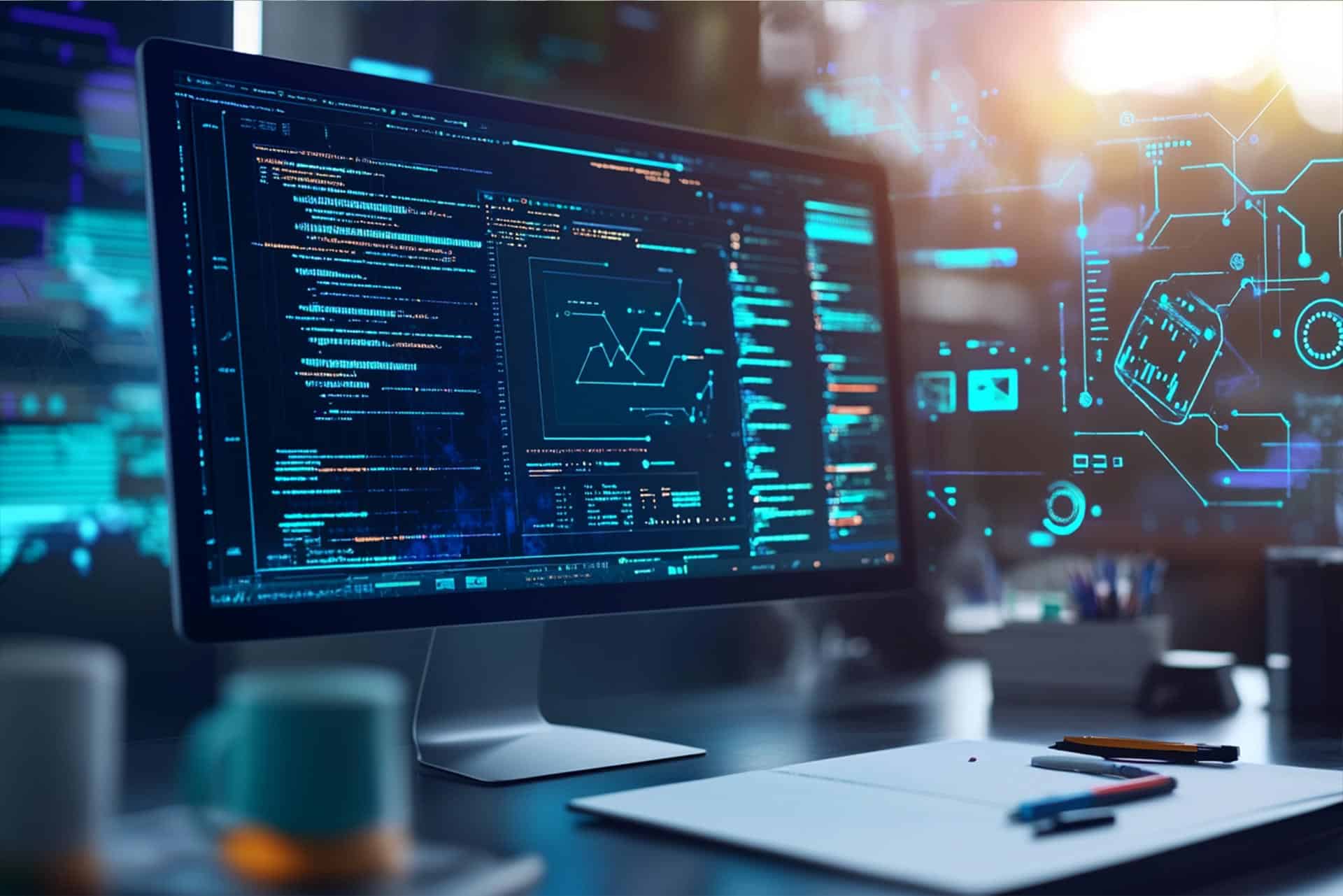Checking Out the Different Kinds of Website Design and Their Distinct Benefits
The landscape of website design encompasses a variety of styles, each offering unique advantages that satisfy different customer needs. Minimal and level designs stress quality, while receptive and worldly styles improve versatility across gadgets. Illustrative and typography-driven strategies aim to boost interaction and emotional resonance. Comprehending these varied kinds can significantly impact customer experience and brand understanding. What lies beneath the surface area of these layout selections?
Minimalist Web Style

Minimalist Web layout usually integrates a minimal shade palette and uncomplicated typography, which not just improves looks but also enhances brand identification. The decreased complexity can cause faster loading times, better enhancing customer complete satisfaction. Additionally, by minimizing aesthetic clutter, users can involve with material much more properly, causing enhanced understanding and retention. In general, minimal website design promotes a smooth customer experience, making it a popular choice for brands intending to convey quality and professionalism and trust in their on-line visibility.
Receptive Website Design
Responsive website design has ended up being essential in today's digital landscape, ensuring mobile compatibility for users across different gadgets. This approach considerably boosts customer experience by giving seamless navigating and access, despite screen size. As even more people access the Web on tablet computers and smartphones, the value of receptive style continues to expand.

Mobile Compatibility Value
As mobile phone use remains to increase, guaranteeing web sites are suitable with numerous display dimensions has ended up being vital for efficient communication and interaction. Mobile compatibility, commonly attained through receptive Web design, permits websites to adapt flawlessly to smart devices, tablet computers, and other devices. This adaptability not just gets to a wider target market yet additionally enhances brand name reputation. A web site that works well on mobile phones reflects professionalism and trust and interest to user requirements. Additionally, online search engine focus on mobile-friendly websites in their rankings, making compatibility a critical aspect for on the internet presence. By buying mobile compatibility, businesses can improve their electronic existence and accommodate the expanding variety of individuals that access details on the go. Focusing on mobile-responsive style is critical in today's digital landscape.
Improved User Experience

Flat Design
Level design is a minimalist method to website design that stresses simplicity and clearness. By getting rid of three-dimensional aspects such as shadows, textures, and slopes, flat layout develops an aesthetically enticing interface that focuses on content and capability. This style advertises an user-friendly navigating experience, as users can swiftly determine essential attributes and activities without interruption.
One of the key benefits of flat layout is its responsiveness throughout numerous gadgets and display dimensions. Its straightforward layouts and tidy lines adapt perfectly, ensuring a consistent experience for users on mobile, tablet, or desktop systems. Additionally, flat style frequently includes vibrant colors and typography, improving aesthetic influence and brand recognition.
Furthermore, the simplicity intrinsic in flat layout causes much faster filling times, which adds positively to customer fulfillment - website design. Overall, flat style continues to be a prominent choice for contemporary Web development, straightening with contemporary visual preferences while providing excellent use
Material Layout
Product Design stands for a layout language established by Google that concentrates on creating a user-friendly and natural individual experience throughout electronic platforms. This technique stresses the use of grid-based designs, receptive animations, and deepness results such as illumination and shadows, which help to produce a feeling of hierarchy and spatial relationships. By imitating the physical world, Material Layout permits users to connect with digital interfaces in an extra appealing and all-natural way.
Among the essential benefits of Product Layout is its adaptability throughout numerous gadgets and screen sizes, ensuring a constant experience for users. Furthermore, it advertises a clear aesthetic language that enhances usability, making it much easier for users to browse intricate applications. The incorporation of lively shades and bold typography additionally plays a vital duty in drawing focus to crucial elements, thus improving total customer engagement - website design. Subsequently, Material Style has actually ended up being a preferred choice amongst designers seeking to develop aesthetically enticing Learn More Here and functional internet sites
Typography-Driven Design
Typography-Driven Design concentrates on the strategic use type to improve the useful and aesthetic facets of a web site. This style method focuses on typefaces, font sizes, spacing, and hierarchy to create aesthetic rate of interest and overview customer experience. By very carefully selecting typography, developers can share brand name identification and stimulate feelings, making the material much more appealing and easily accessible.
Efficient typography boosts readability and use, guaranteeing that individuals can quickly take in and navigate the site information. The ideal combination of type can additionally develop a clear visual pecking order, allowing individuals to swiftly recognize vital messages and contacts us to activity.
A typography-driven strategy can be adjusted to numerous devices, ensuring uniformity throughout systems. This flexibility is crucial in today's multi-device landscape, where customer experience is critical. Ultimately, Typography-Driven Style serves not only as an artistic selection but likewise as a practical component that substantially affects a site's efficiency.
Illustrative Website Design
Illustratory website design uses aesthetic storytelling methods that can significantly boost customer involvement. By incorporating one-of-a-kind illustrations, sites can develop an unforgettable brand identification that reverberates with their audience. This approach not only captivates visitors yet likewise communicates messages in an aesthetically compelling fashion.
Visual Storytelling Strategies
A wide variety of Web developers employ visual narration strategies to create immersive and appealing customer experiences. This method integrates design, typography, and images to tell a tale that resonates with customers on an emotional degree. By incorporating compelling visuals, designers can successfully convey messages and stimulate sensations, assisting visitors via a brand name's journey. Infographics, computer animations, and interactive aspects serve to improve stories, making complicated information more obtainable and my company unforgettable. Additionally, aesthetic storytelling can establish a natural brand identity, as regular images and styles reinforce core values and messages. Ultimately, this strategy not only astounds individuals however also cultivates a deeper link with the web content, motivating exploration and retention. With skilled application, aesthetic storytelling transforms common Web experiences into dynamic and meaningful communications.
Enhancing Individual Involvement
Reliable website design significantly boosts customer involvement by leveraging illustrative components that attract focus and foster interaction. Images can streamline complex ideas, making them a lot more approachable and unforgettable for users. They damage the dullness of text-heavy pages, producing aesthetic breaks that invite exploration. Additionally, distinct illustrations can evoke feelings, urging individuals to get in touch official statement with the web content on a much deeper level. Interactive elements, such as animations or hover results, can likewise enhance interaction by inviting users to participate actively rather than passively taking in info. This approach not only keeps visitors on the site much longer however also raises the probability of return sees. Eventually, efficient illustrative Web design changes the customer experience, making it a lot more impactful and pleasurable.
Branding Via Image
Aesthetic aspects play a substantial role fit a brand's identification, and pictures are an effective device in this regard. Illustratory Web design enables brand names to convey their distinct individuality and worths via custom-made art work. This technique promotes a deeper emotional connection with the target market, enhancing memorability and interaction. By integrating images, brands can distinguish themselves in a jampacked market, producing a distinct visual story that reverberates with their target group. In addition, illustrations can make and simplify complex concepts content a lot more accessible, successfully connecting messages in an interesting fashion. Generally, branding through image not just enhances the user experience yet additionally enhances brand name acknowledgment, making it a useful method for services aiming to develop a solid on the internet visibility.
Often Asked Inquiries
Exactly how Do I Select the Right Website Design Kind for My Company?
To select the best Web layout type for a business, one should evaluate objectives, target audience, and industry criteria. Evaluating individual experience and capability will direct the selection procedure for ideal engagement and efficiency.
What Equipment Are Best for Producing Various Web Layout Styles?
Popular devices for creating varied Web design styles include Adobe XD, Figma, Sketch, and WordPress. Each deals one-of-a-kind features customized to various layout demands, enabling developers to construct visually appealing and useful internet sites efficiently.
Just How Much Does Specialist Website Design Typically Price?
Professional Web design normally costs between $2,000 and $10,000, depending on intricacy, attributes, and developer competence. Customized services and continuous maintenance may increase costs, while design templates can offer more affordable choices for less complex jobs.
Can I Integrate Numerous Website Design Keys In Successfully?
Yes, combining multiple website design kinds can be reliable. By integrating components from numerous designs, designers can develop unique, interesting customer experiences that cater to diverse audiences while improving performance and visual appeal.
Just How Do Design Trends Effect Customer Experience and Interaction?
Style trends considerably affect individual experience and involvement by boosting aesthetic appeal, boosting navigating, and fostering psychological connections - website development. Staying upgraded with patterns allows developers to produce intuitive interfaces that reverberate with customers and urge long term communications
Minimal and flat styles highlight clarity, while responsive and material designs improve adaptability across devices. It may seem counterintuitive, minimal Web style stresses simpleness to enhance user experience. Responsive Web style plays a crucial duty in enhancing customer experience by ensuring that a web site adjusts perfectly to numerous display dimensions and gadgets. Flat layout is a minimalist method to Web style that emphasizes simplicity and clearness. Material Layout stands for a layout language established by Google that concentrates on producing a cohesive and intuitive customer experience across digital platforms.